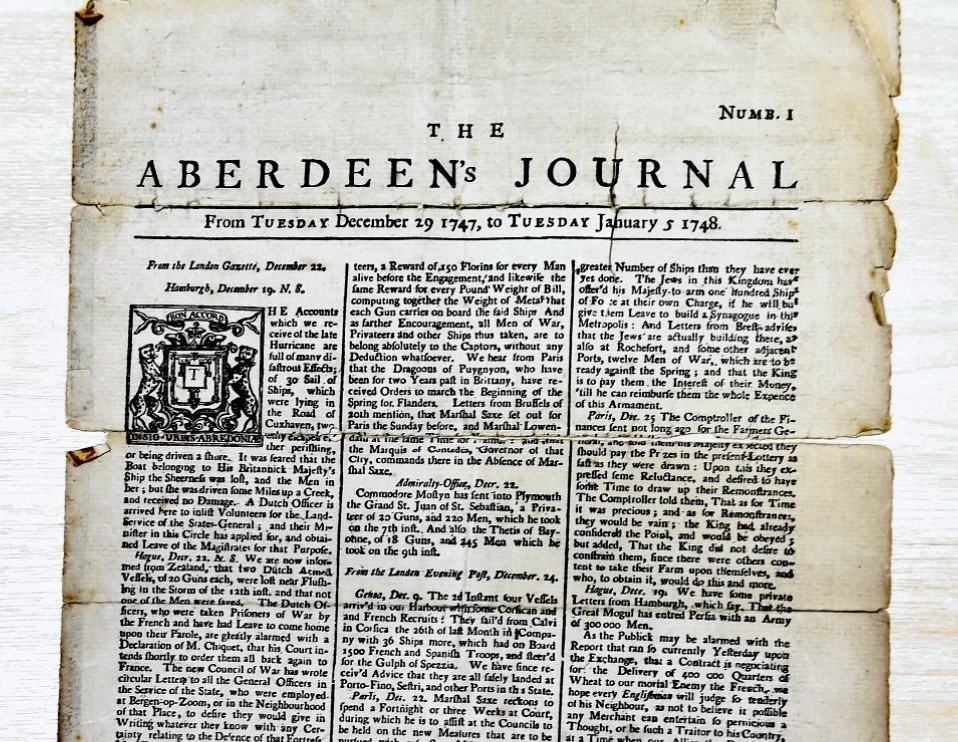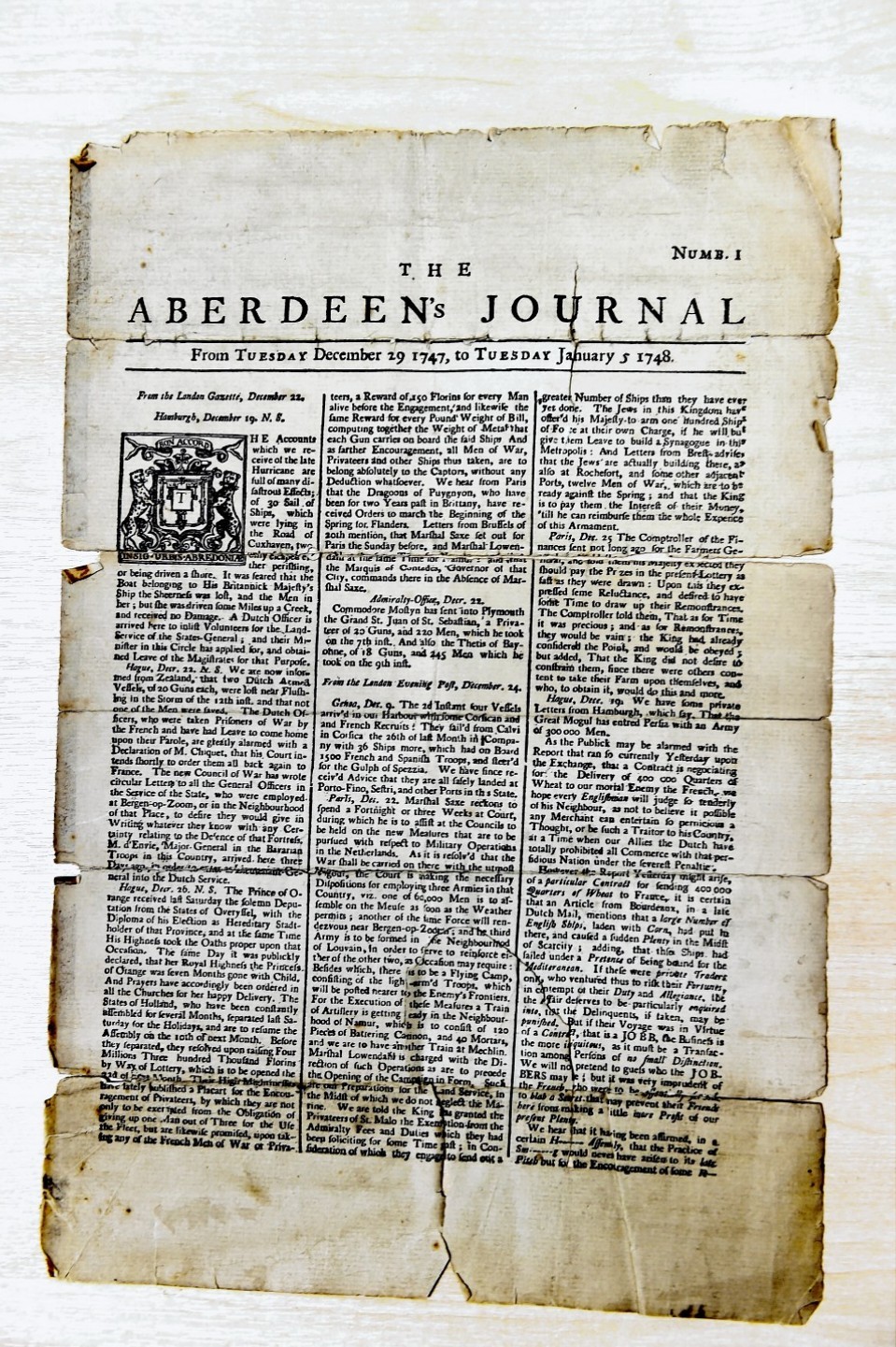A north-east woman has unearthed could be one of the last remaining first editions of the Press and Journal.
Ann Burgess made the discovery when she was clearing out her late great-aunt’s Aberdeen home.
She was stunned when she noticed the edition number at the top of the front page, and the dates Tuesday, December 29 1747-Tuesday, January 5 1748.
Mrs Burgess, of Newmachar, said: “I don’t know if I’ve ever seen a newspaper this old, it’s very difficult to read, but seems to be mainly about wars and ships and made up of letters from other newspapers.
“I don’t know why my aunt had held onto it all these years but she seemed to hang on to old things.”
The first edition of the P&J was a four-page weekly paper, then known as the Aberdeen’s Journal, before it became the Aberdeen Journal the following year. It was given its current name in 1922.
David Powell, archive manager for DC Thomson, has examined the paper and says there is a good chance it is the “real thing”.
Mr Powell suggested it may have survived so well as it would have been printed on better quality paper than those printed in the last 100 years.
He added: “The chemical composition of the modern newsprint accelerates the natural decay of the paper, making them brittle and fragile within a few years of their publication. However, we have to remember that newspapers were designed to be kept for a day or a week and not forever.
“It’s hard to confirm whether this example is a genuine first edition or not as there have been several facsimile copies made and issued over the years to celebrate anniversaries. However, the quality of the paper, the size and general condition
suggest it may well be the real thing. It’s obviously had a bit of a life but it’s nice to know it’s been enjoyed and appreciated.”
The potential artefact will now be taken for treatment, and will then be archived to protect it for years to come.

